Star Citizen is an ongoing attempt to create the largest, fully persistent, fully immersive, universal sandbox MMO of its kind. It’s a complex project that includes planets, space stations, cities, outposts, and professions, with a whopping 10 years of development time and massive updates being pushed out every quarter. However, the game still lives mostly in a bug-heavy alpha state, which has resulted in criticism of its cost and production time, and even accusations of being a scam. Despite this, the ambition of the project is something to be enjoyed, but the real question is whether the average player can grasp the full scope of the game’s technical complexity. As someone who has watched and played the game evolve week after week for the past decade, hopefully, I can provide you with a digestible overview of the project, whether it’s worth supporting, and answer the question, what is Star Citizen?
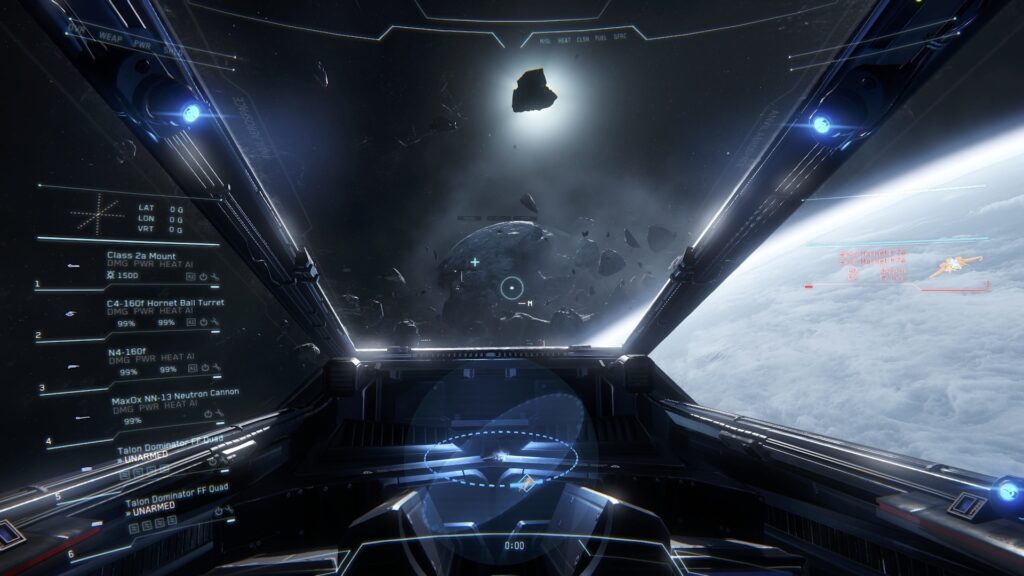
Before we begin, I want to make it clear that nowhere in this article, or any of our articles on Star Citizen, will we tell you to purchase anything beyond the starter game package to play it. The game is still in heavy active development, everything is a work in progress, subject to change, and anything you decide to spend money on is solely to support the game’s development. Additionally, major events such as the Intergalactic Aerospace Expo happen every year in mid-November, showcasing the entire library of ships currently in the game, and allowing players to rent them for free. There’s also typically a lengthy free-fly event in conjunction with the expo, allowing prospective players to try the game without spending a dime.
Together, these events enable anyone to immerse themselves in full gameplay loops, try out everything from starter to end-game ships, and see if they enjoy the project in its current state. If you end up liking it and choose to purchase a starter package, I recommend using a referral code to secure some extra end-game starting currency, and waiting until they offer a free smaller ship like the Gravel Bike or the Argo MPV during a referral event. This is essentially them giving you $30 to $40 for free, so it’s worth taking advantage of.
Counterpoint: Is Star Citizen a Scam?
That said, the game has certainly made a lot of money. Recently, a post highlighted Star Citizen’s official website “funds raised” tracker, which has surpassed a mind-boggling $US500 ($694) million raised from 4,096,539 donors.
Half a billion dollars.
For a video game that has been in development for more than ten years. If this had been five years ago, I would have questioned the game’s future, or perhaps cracked a few jokes. However, it’s 2022, and the lack of progress is just… disheartening. It’s a shame, really. Given a little bit of proper management and realistic expectations, they could have concluded an entire trilogy of games by now.
Nonetheless, Star Citizen persists as a reminder of what could have been. Remember the trailer they released in 2015, while Obama was still in office? It’s a poignant moment of nostalgia for what once was and what might have been.
Half a billion and still no game. Not surprised. Early access/crowd funding/whatever you want to call it is largely a scam and a lot of people are suckers.
Secondly, it’s important to understand that Cloud Imperium Games is developing two games simultaneously: Star Citizen and Squadron 42. Squadron 42 is the single-player campaign set within the same universe, featuring voice acting talent like Gary Oldman, Mark Strong, and Mark Hamill, and it’s kept largely under wraps to avoid spoilers for the reportedly 70-chapter story. The majority of the studio staff spends their time working on this project, and upon completion and release, CIG aims to inject new locations, ships, enemies, and even gameplay systems appropriate for the Star Citizen universe. Squadron 42 draws its own share of criticism from some players because it isn’t the project a majority initially backed, but it is still very much happening. Star Citizen, on the other hand, is the topic of this video and is the project you hear about most often. It’s a universe sim that features no loading screens, incredible detail and fidelity, and seamless transitions between all pieces of content when it works. You can call your ship to a hangar, move about within it dynamically, transition with full control from atmosphere to space, and set off to anywhere you want in the vastness of space.

Star Citizen is a complex project that aims to create the largest, fully persistent, fully immersive, universal sandbox MMO of its kind. One of the defining moments of any Star Citizen experience is the first time you enter a planet’s atmosphere, complete with sound effects and entry burn as you wrestle with the gravity that takes hold of your ship. Microtech is one of the major planets within the Stanton system, the first major system in Star Citizen, and is about as far out from this system’s sun as possible. A terraforming error left the planet with unnaturally dense cloud cover, resulting in a much colder than average climate, inadvertently making it an ideal location for the company that owns it, Microtech, to house its heat-sensitive manufacturing centers.
Counterpoint: Is Star Citizen a Scam?
Across all planets, you’ll find unique biomes and weather conditions, all subject to temperatures, humidity levels, and atmospheric compositions. Frigid mountain ranges can give way to lush fields and winding rivers, and this doesn’t stop here. Each planet also features natural and artificial satellites on both planets and sometimes their orbiting bodies. You’ll come across various points of interest, such as outposts, providing opportunities to run into other players and for picking up and delivering both legal and illicit cargo. You’ll even find cave systems ideal for exploring, looting, and mining solo or with a couple of friends, both on foot and sometimes by vehicle. Shipwrecks and abandoned colonial outposts provide opportunities for further exploration and platforming, combat, and even more looting. Then there are bunkers that feature combat objectives, putting you up against both lawful and unlawful forces to watch out for and even live. These constantly expand to include more variations, better layouts with unique traversal opportunities, and dynamic objective gameplay. Finally, landing zones are easily the most standout locations on each planet or orbiting body. These often feature sprawling cities or settlements owned by entire governments, outlaw groups, or companies such as Orison on Crusader, Laville on Hurston, and New Babbage on Microtech.

While each planet offers a variety of options to engage with, worlds still remain largely empty. As development continues to add more dynamically placed features such as active colonial outposts and settlements, request givers, traders, and factions will all play a substantial role. All of this isn’t possible without your ship, and while you as a new player might be starting with the humble beginnings of an Aurora or Mustang, eventually you’ll be able to progress to bigger and more complex vessels, even ones that can hold land vehicles and other ships. A massive selling point of Star Citizen is the sheer detail and complexity that CIG puts into the hundreds of ships available to the player.
All ships and Star Citizen fall into dedicated roles such as combat, transportation, exploration, industrial support, racing, and more. Some even fulfill multiple roles like the Anvil Car, housing a Medical Bay, a drone support bay, massive detachable cargo pods, hangers for both ground vehicles and small support craft, and features for exploration and mapping jumps. While it may have numerous features as an exploration ship, other specialized ships will perform specific tasks better or to a higher degree. Every ship in Star Citizen is created by a different manufacturer that influences not only its visuals but also its core functionality. Take Origin, for example, the BMW of the universe. Here you’ll find high-end vessels that cater to luxury clientele, often having over-the-top amenities, insanely clean line work, and roles that focus on touring, exploration, and racing. Then you have something on the opposite end of the spectrum like Argo Astronautics, makers of bold, rugged, and functional industrial ships aimed at cargo hauling, mining, and maintenance.
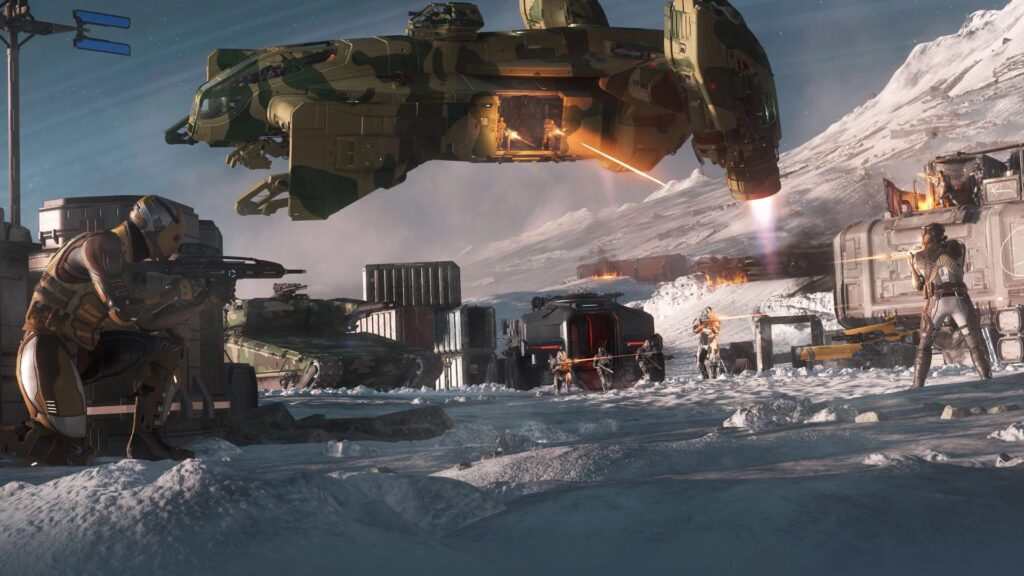
In Star Citizen, your experiences aren’t limited to the confines of your ship’s cockpit like other space games. You have the ability to wake up on your ship and move about the interior before taking in the gorgeous view of the nebula you’re parked in, but you can also do the same aboard a space station or on a planet in one of the numerous cities mentioned earlier. Vendors at these locations make their stores available to you, allowing you to stock up on essential items like food, beverages, and medical supplies, as well as situational gear in the form of weapons, ammo, and even armor. Every sign, map, or visual context clue in the world actually means something just as it would in the real world.
One really awesome thing about Star Citizen is that you can take your purchases and, provided your ship has the capacity, store them for use by yourself or even friends. This opens up your opportunity to make use of bigger and more versatile ships. The larger the ship in Star Citizen, the larger the crew you’ll need to make it function at a bare minimum. Just because a player has the larger ship in the game doesn’t mean that they have an automatic win condition over anyone else. While skill and game knowledge are defining factors to your success in Star Citizen, if you don’t have the crew to manage core systems of a larger ship such as turrets, power distribution, and even utilities like tractor beams and mining lasers, you’ll be at a severe disadvantage at best, a sitting duck at worst.

All the ships and tools at your disposal are there to aid you in your journey through Star Citizen’s ever-expanding professions and activities. While things like stat investment and skills were teased during 2022 CitizenCon, Star Citizen remains largely a skill and knowledge-based experience that increases in effectiveness the more proficient you become.
Some of the established and ever-expanding professions include mining and refining, where you’ll visit asteroid belts and planetary surfaces in search of lucrative orders and gems, eventually transporting that haul to one of many refineries around the verse, each providing different results and speed and efficiency in an effort to make the most credits for the time spent. Cargo hauling and smuggling have players transporting those very same refined materials, central goods, or even illicit products from one location to another depending on supply and demand. Physicalized cargo aims to see the cargo become fully movable and labelable even through ship destruction by other cargo haulers and pirates. Should you run out of fuel or munitions, those can be replenished by fellow fuel rats through the refuel and re-arm systems.
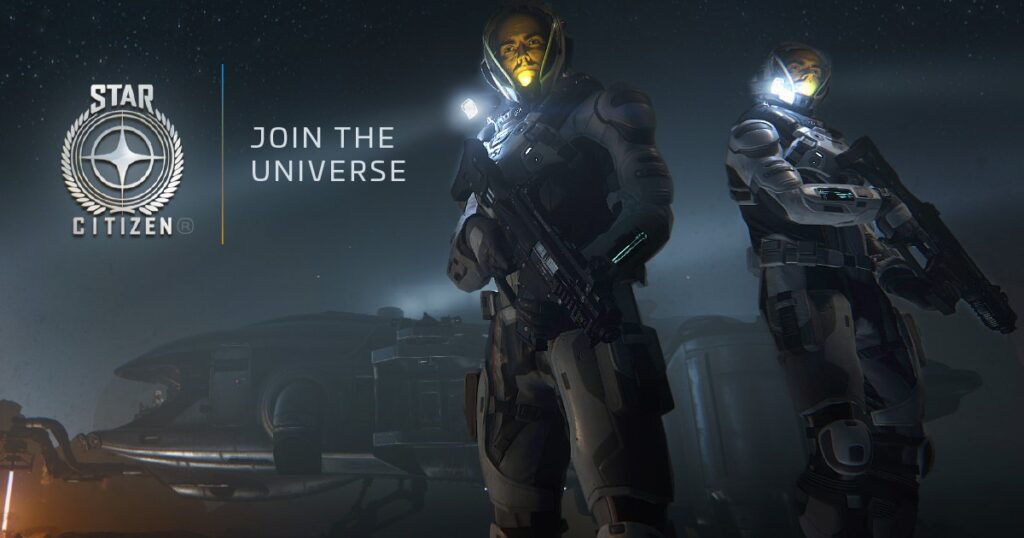
While ships beyond saving will eventually end up in the salvage loop as you seek to squeeze out some final credits from derelict ships. There are even additional professions in the way of data running, exploration and mapping, homestead construction, and even the long-awaited engineering and expanded multi-crew gameplay where you’ll see players managing power relays, life support, and even component management and repair.
Piracy is a viable gameplay avenue, but the lawful side of bounty hunting is also on the table.
Piracy is a viable gameplay avenue, but the lawful side of bounty hunting is also on the table. You’ll have access to both player bounties and high-value AI targets that can range anywhere from FPS ground combat to ship dogfighting.
One of the defining features of Star Citizen is the ability to enter a planet’s atmosphere and experience the sound effects and entry burn as your ship wrestles with the planet’s gravity. Each planet in the game has its own unique biomes and weather conditions that are subject to temperature, humidity levels, and atmospheric compositions. In addition to this, each planet also features natural and artificial satellites, outposts, cave systems, and abandoned colonial outposts. The game also has bunkers that feature combat objectives where players can go up against both lawful and unlawful forces.
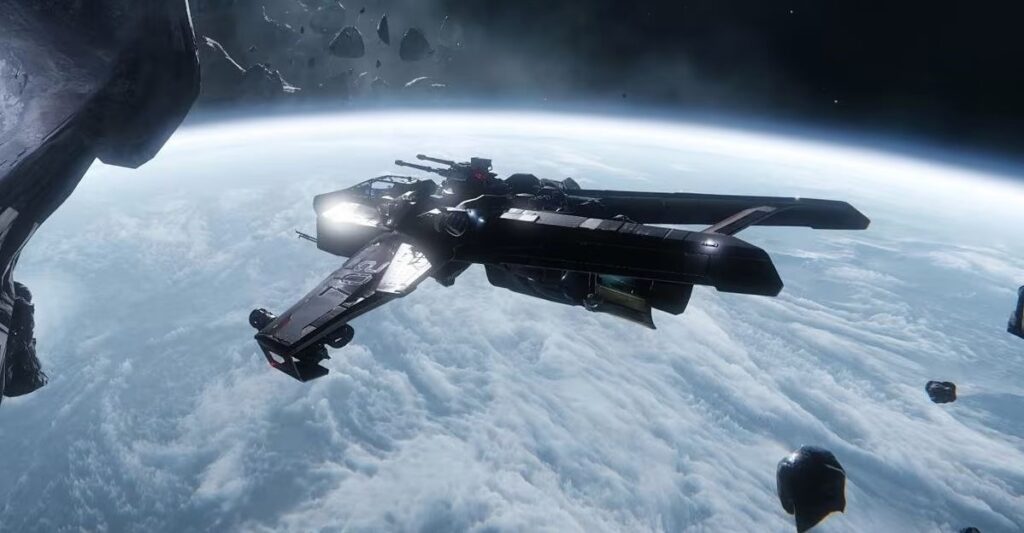
If you find yourself injured during any of the activities in Star Citizen, the medical gameplay loop can help you. You can become familiar with the various drugs and healing tools available to respond to distress beacons and bring players back from the brink of death. You can also improve your chances of survival by replacing the components on your ship with higher quality ones or investing in the right armor or FBS tools for the job.
It’s important to note that since Star Citizen is still in active development, not all professions and activities are evenly developed. Some severely lack advanced forms of their systems, while others are nearly feature-complete. However, regardless of their level of development, all of these professions and activities will earn you some form of money and contribute to your character’s progression.
In Star Citizen, players can look forward to a whole host of progression offerings. One of the most significant is reputation. As you work for various NPCs, organizations, or factions, you’ll gain reputation points, both good and bad, that will open up increasingly difficult and more rewarding missions. Your affinity with certain factions can positively or negatively affect your relationships with others, and in the near future, your reputation will directly affect the way NPCs react to you.
Every time you die in Star Citizen, you leave behind your body, complete with your gear, weapons, and entire inventory. While you can travel back to where you died, so can other players. Everything in the game eventually loops back to a fundamental core concept and ultimately system, the death of a spaceman.
The ultimate goal for Star Citizen, one that isn’t talked about enough, is for your death to matter.
The ultimate goal for Star Citizen, one that isn’t talked about enough, is for your death to matter. With each death and regeneration at a hospital, your character’s clone genetic profile is supposed to degrade until your character permanently dies. This means that the reputation you’ve earned, the stats you’ve progressed, and the things you’ve earned in-game will all be lost with enough deaths. This not only breeds more emergent gameplay and RP scenarios but also aims to make interactions with other players, engagement with the law and prison systems, and the high risk, high reward of outlaw gameplay matter in the long term. It’s a true social experiment and progression system in one.
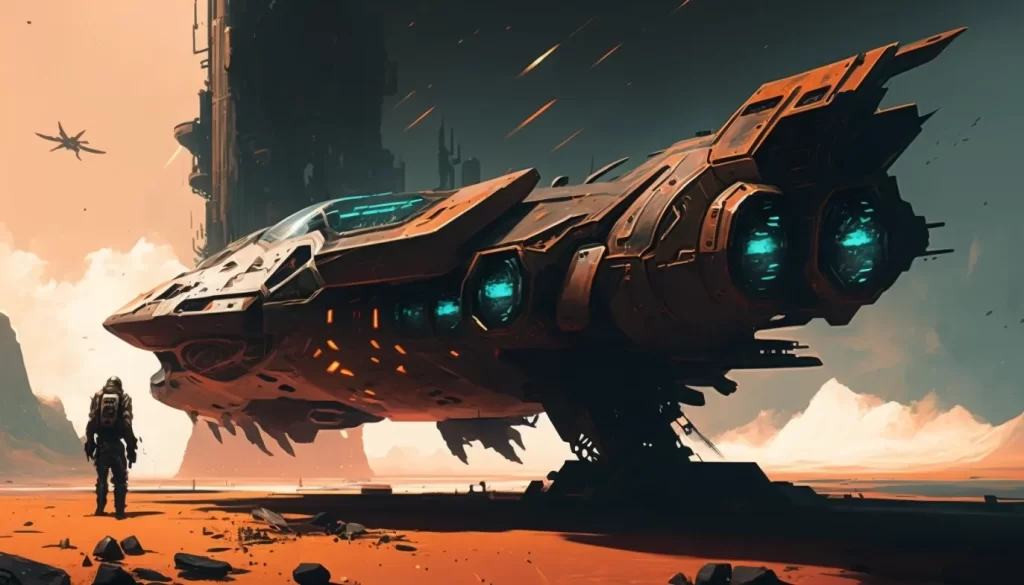
On the social side of things, Star Citizen has one of the best and most welcoming communities in the video game landscape. The company is very open with their development through extensive dev interviews, weekly content previews, monthly reports, and even a fully explorable and constantly updated roadmap and progress tracker. The community runs its own events like ship meetups and fully broadcasted races.
On the social side of things, Star Citizen has one of the best and most welcoming communities in the video game landscape.
Adding friends in-game or heading to external website resources to manage player-run clans called organizations, which can have thousands of players alone, makes it easier to participate in social events. Regardless of what you’re doing or your questions, chances are someone will be happy to help you along the way.
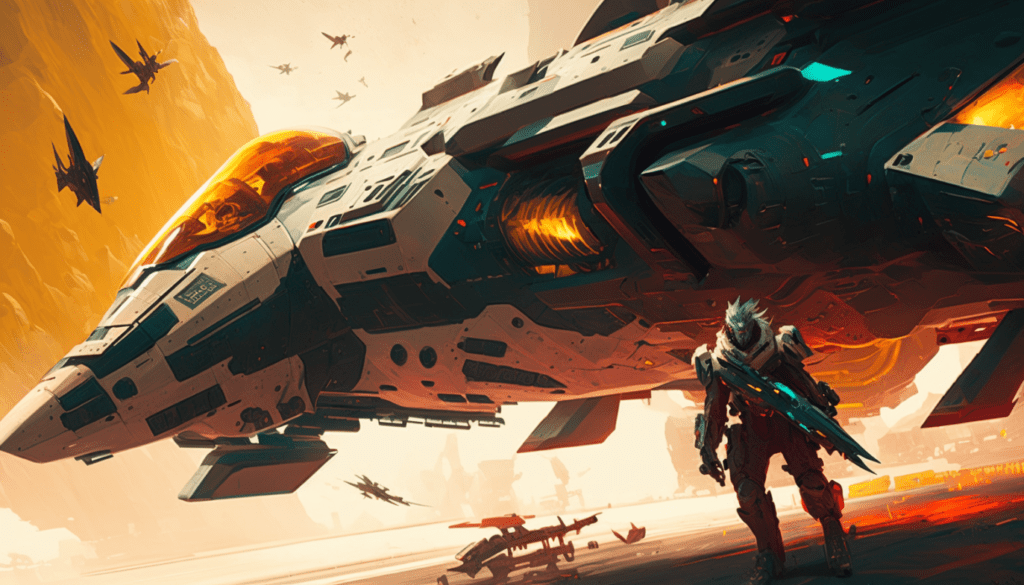
With the ever-changing and expanding nature of Star Citizen being a constant work in progress, expect things to drastically change and evolve with time. It’s a game that truly doesn’t hold your hand very often, even if they’re working on improving environmental contact scans. They leave it up to you, the player, to map out your own fate, even if the bugs tend to rob you of that.
It’s a game that is massively misunderstood by the public, in part due to half-baked journalism attempting to drive clicks and criticize development costs.
In summary, Star Citizen has a lot of potential to offer, and with constant development, it’s a game that will continue to evolve. It’s a game massively misunderstood by the public, partly due to half-baked journalism attempting to drive clicks and criticize development costs.
It’s worth noting that an equal level of funding for other games, like Red Dead Redemption Two, for instance, may only produce a game that is a fraction of the scope of what Star Citizen is aiming for. Or maybe it will forever be stuck in a development cycle of half baked ideas.













